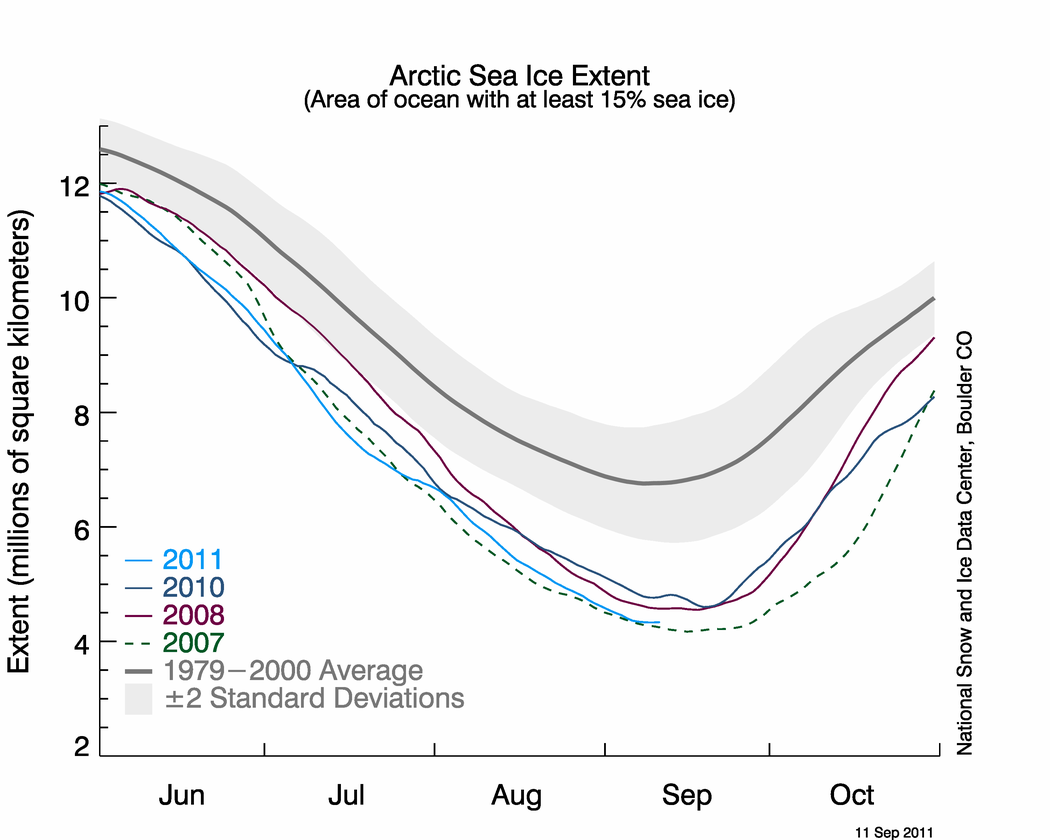The American National Snow and Ice Data Center has announced – in a differing view than that put forward by the University of Bremen scientists earlier in the week – that the Arctic sea ice extent has slowed and is nearing its minimum extent.

The NSIDC data shows that Arctic sea ice is currently at its second-lowest level in the satellite record, reaching 4.34 million square kilometres (1.68 million square miles) on September 10. This figure puts it at 110,000 square kilometres (42,500 square miles) above the 2007 value at the same date, which eventually reached 4.17 million square kilometres (1.61 million square miles).
According to NSIDC, “the rate of decline has flattened considerably the last few days,” adding that “Arctic sea ice is likely near its minimum value for the year.”
However, it was only Monday when researchers from the University of Bremen announced that 2001’s Arctic sea ice minimum was the smallest in recorded history at 4.24 million square kilometres, coming in under what they reported as 2007’s value of 4.267 million square kilometres.
Referring to the discrepancy between various calculations, NSIDC noted that the University of Bremen “employ an algorithm that uses high resolution information from the JAXA AMSR-E sensor on the NASA Aqua satellite. This resolution allows small ice and open water features to be detected that are not observed by other products.”
“This year the ice cover is more dispersed than 2007 with many of these small open water areas within the ice pack. While the University of Bremen and other data may show slightly different numbers, all of the data agree that Arctic sea ice is continuing its long-term decline.”
Data for NSIDC’s sea ice reports come from the Special Sensor Microwave Imager/Sounder (SSMIS) sensor on the Defense Meteorological Satellite Program (DMSP) F17 satellite, which is recorded using the NASA Team algorithm developed by scientists at the NASA Goddard Space Flight Center.
Final announcements of sea ice minimum will start appearing in the first few weeks of October once the sea ice has completely finished decreasing.
Source: National Snow and Ice Data Center

